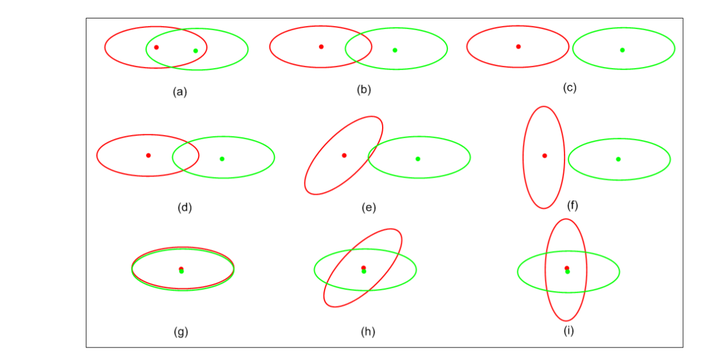L1-Norm Heteroscedastic Discriminant Analysis under Mixture of Gaussian Distributions

Abstract
Fisher’s criterion is one of the most popular discriminant criteria for feature extraction. It is defined as the generalized Rayleigh quotient of the between-class scatter distance to the within-class scatter distance. Consequently, Fisher’s criterion does not take advantage of the discriminant information in the class covariance differences and hence its discriminant ability largely depends on the class mean differences. If the class mean distances are relatively large compared with the within-class scatter distance, Fisher’s criterion based discriminant analysis methods may achieve a good discriminant performance. Otherwise, it may not deliver good results. Moreover, we observe that the between-class distance of Fisher’s criterion is based on the ℓ2 norm, which would be disadvantageous to separate the classes with smaller class mean distances. To overcome the drawback of Fisher’s criterion, in this paper we firstly derive a new discriminant criterion, expressed as a mixture of absolute generalized Rayleigh quotients (MAGRQ), based on a Bayes error upper bound estimation, where mixture of Gaussians is adopted to approximate the real distribution of data samples. Then, the criterion is further modified by replacing ℓ2 norm with ℓ1 one to better describe the between-class scatter distance, such that it would be more effective to separate the different classes. Moreover, we propose a novel ℓ1-norm heteroscedastic discriminant analysis method based on the new discriminant analysis (L1-HDA/GM) for heteroscedastic feature extraction, in which the optimization problem of L1-HDA/GM can be efficiently solved by using eigenvalue decomposition approach. Finally, we conduct extensive experiments on four real data sets and demonstrate that the proposed method achieves much competitive results compared to the state-of-the-art methods.